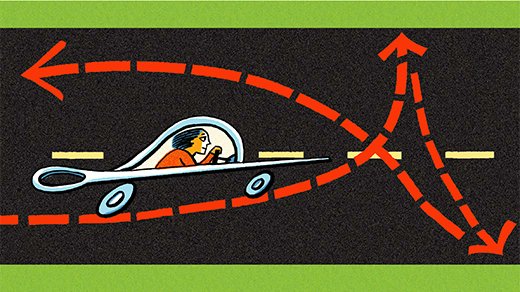Math that Moves the Needle — Quanta Magazine
My latest column for Quanta Magazine explores a century-old geometry problem that anyone who’s ever performed a three-point turn can appreciate.
Imagine you’re rolling down the street in a driverless car when you see a problem ahead. An Amazon delivery driver got their van halfway past a double-parked UPS truck before realizing they couldn’t make it through. Now they’re stuck. And so are you.
There’s a fun math problem here about how much space you need to turn your car around, and mathematicians have been working on an idealized version of it for over 100 years. It started in 1917 when the Japanese mathematician Sōichi Kakeya posed a problem that sounds a little like our traffic jam. Suppose you’ve got an infinitely thin needle of length 1. What’s the area of the smallest region in which you can turn the needle 180 degrees and return it to its original position? This is known as Kakeya’s needle problem, and mathematicians are still studying variations of it. Let’s take a look at the simple geometry that makes Kakeya’s needle problem so interesting and surprising.
You can read all about the surprising resolution of Kakeya’s needle problem in my full column for Quanta Magazine.

0 Comments